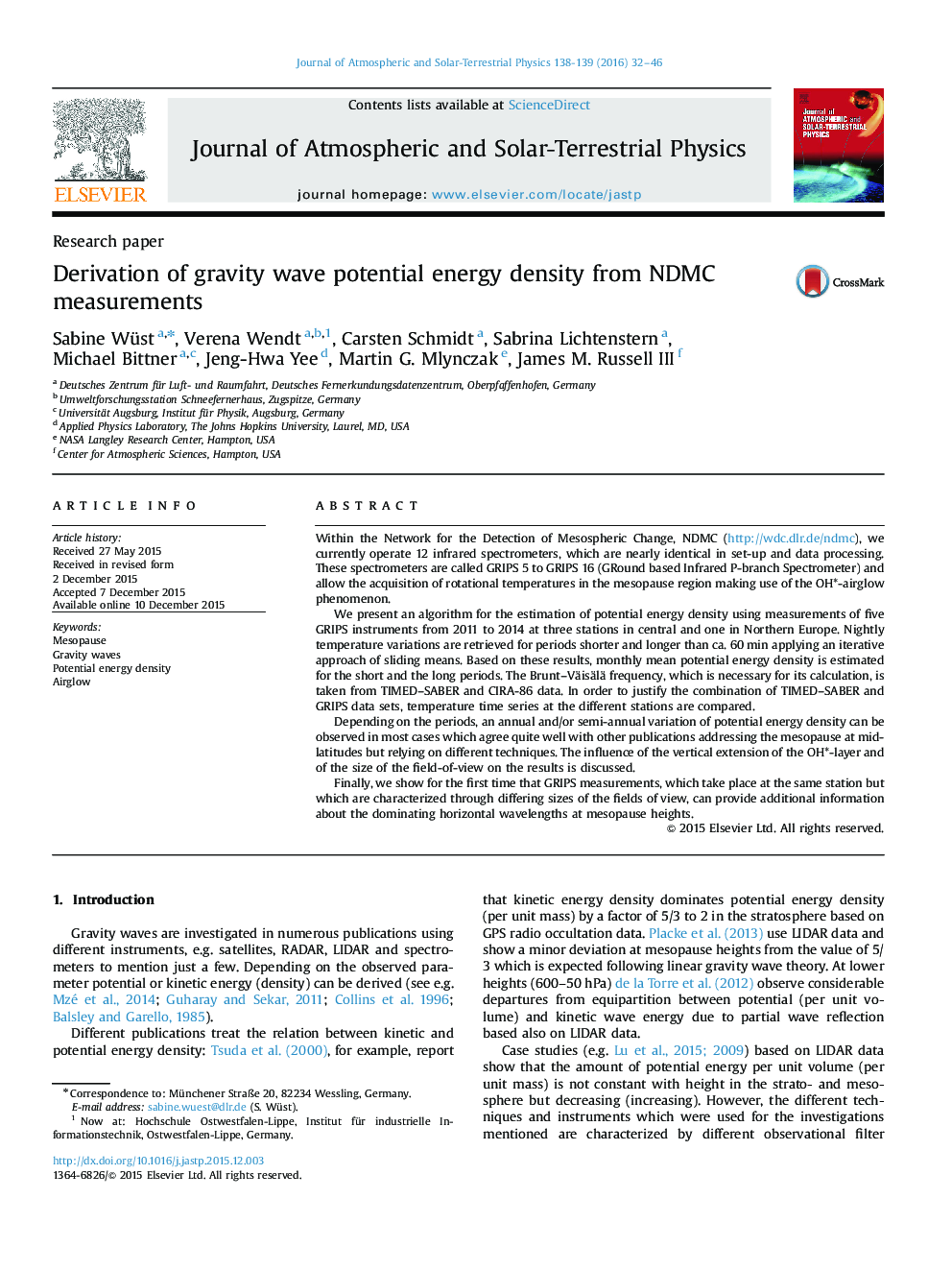| کد مقاله | کد نشریه | سال انتشار | مقاله انگلیسی | نسخه تمام متن |
|---|---|---|---|---|
| 1776306 | 1523607 | 2016 | 15 صفحه PDF | دانلود رایگان |

• We estimate potential energy density using NDMC measurements from four stations.
• Depending on periods, annual or semi-annual variations can be observed.
• The influence of the size of the instrument's field-of-view on the results is discussed.
• Horizontal wavelengths are derived for two instruments operated at the same station.
• This is done without use of an imaging system.
Within the Network for the Detection of Mesospheric Change, NDMC (http://wdc.dlr.de/ndmc), we currently operate 12 infrared spectrometers, which are nearly identical in set-up and data processing. These spectrometers are called GRIPS 5 to GRIPS 16 (GRound based Infrared P-branch Spectrometer) and allow the acquisition of rotational temperatures in the mesopause region making use of the OH*-airglow phenomenon.We present an algorithm for the estimation of potential energy density using measurements of five GRIPS instruments from 2011 to 2014 at three stations in central and one in Northern Europe. Nightly temperature variations are retrieved for periods shorter and longer than ca. 60 min applying an iterative approach of sliding means. Based on these results, monthly mean potential energy density is estimated for the short and the long periods. The Brunt–Väisälä frequency, which is necessary for its calculation, is taken from TIMED–SABER and CIRA-86 data. In order to justify the combination of TIMED–SABER and GRIPS data sets, temperature time series at the different stations are compared.Depending on the periods, an annual and/or semi-annual variation of potential energy density can be observed in most cases which agree quite well with other publications addressing the mesopause at mid-latitudes but relying on different techniques. The influence of the vertical extension of the OH*-layer and of the size of the field-of-view on the results is discussed.Finally, we show for the first time that GRIPS measurements, which take place at the same station but which are characterized through differing sizes of the fields of view, can provide additional information about the dominating horizontal wavelengths at mesopause heights.
Journal: Journal of Atmospheric and Solar-Terrestrial Physics - Volumes 138–139, February 2016, Pages 32–46